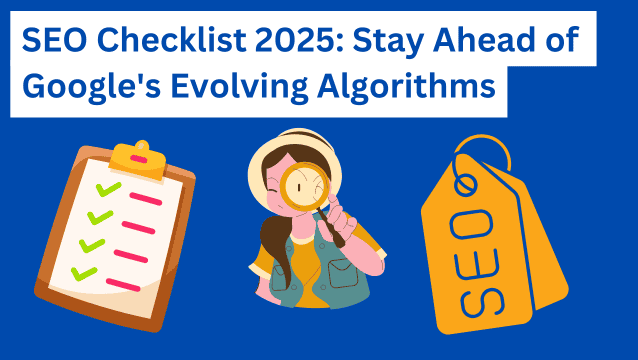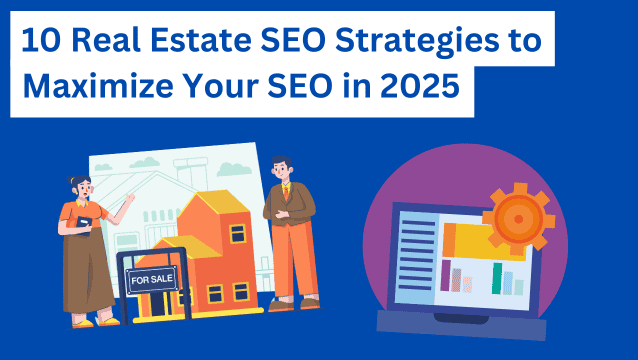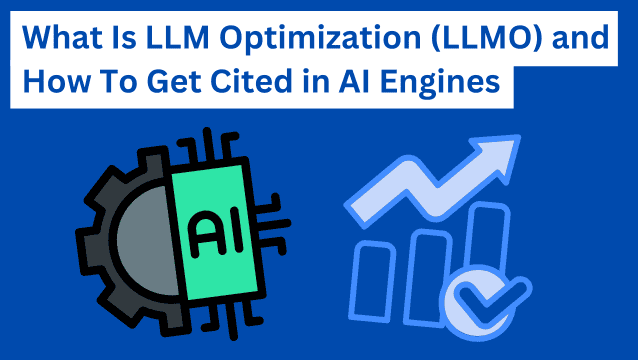For the last decade, many SaaS SEO teams and agencies have taken shortcuts, particularly with content, and the emergence of AI has only made that worse.
But over the last year, the bill has come due, and these SEO mistakes have resulted in catastrophic losses for some of the leading SaaS companies in the business.
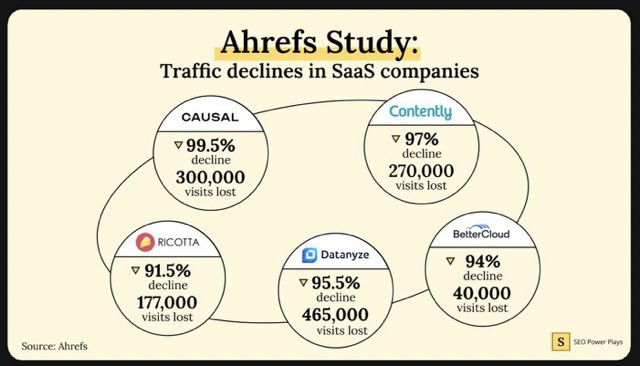
The thing is… this shouldn’t have been a surprise.
While Google’s algorithm has been a bit erratic since the launch of GPT3, ultimately, Google always figures out how to optimize their algorithm in a way that punishes shortcuts.
This is why uSERP has always focused on creating authority content and building premium links for our SaaS SEO agency clients, and its’ the reason not a SINGLE one of those clients has suffered a traffic loss over the last year.
In fact, our client Hightouch did the exact opposite of losing traffic and just raised $80M on a $1.2B valuation.
If you want to learn more about the SaaS SEO mistakes that cost five juggernauts millions of dollars this last year, and see what we would have done instead if they were working with us, continue reading.
And if you want to turn your series A or B into the next unicorn IPO (like our client Monday.com), click here to chat with us.
SaaS SEO mistake 1: Automated content manipulation
Casual, a finance platform for startups, saw a 99.52% decrease in organic traffic. It received a Google manual penalty. This happens when Google’s webspam team detects a website violating its Search Essentials.

A website receives a manual penalty when a human reviewer at Google determines it uses spammy or manipulative SEO tactics.
So, what did Casual do to earn its spot on Google’s manual penalty list? It committed one of the biggest SEO mistakes a company can make. The company cloned its competitor’s site map. So, it copied the structure, navigation, and content layout of a competitor site.
The goal was to piggyback on what was already working for them and boost rankings quickly. To do this, Casual used generative AI to mass-produce low-quality content.
When Google caught wind of this, it penalized the site and removed it from search results.
You might be thinking, “Didn’t Google say it was ok to use AI-generated content?” Yes, the search engine explicitly states:
“Appropriate use of AI or automation is not against our guidelines.”
But what if you use it to generate content primarily to manipulate search rankings? It means you’re violating Google’s spam policies. So, that’s where Casual went wrong. Its sole aim was to “game” the rankings, not genuinely help users.
What Casual should have done:
- Analyze, don’t copy: Studying a competitor’s site structure is smart, but blindly copying it is a mistake. The company should have identified gaps in the competitor’s content. Then, it should have offered something better.
- Use AI wisely: Generative AI can be a powerful tool but needs human oversight. It was a huge mistake to use AI for mass-producing low-quality content. Casual should have used it to help with research, generate ideas, and create drafts. Then, the team should have edited and fact-checked the content. That way, it would have had original, high-quality content. They also should have added more value through original research, industry stats, etc.
What if uSERP handled the SEO strategy for Casual? We would have taken a more strategic, long-term approach—similar to what we did for Monday.com.
For example, we would have conducted a detailed analysis of competitor rankings. For Monday.com, we analyzed players like ClickUp, Trello, and Asana. This helped us understand what was working and where Monday could differentiate itself.
Instead of relying on AI-generated fluff, we focused on high-quality, research-backed content. With Monday.com, we created 750+ content pieces targeting valuable search terms.
Another mistake Casual made was not building authority. We helped Monday.com earn backlinks from high-authority sites. This included Crunchbase, BigCommerce, and G2, which helped boost Monday’s domain rating.
Overall, Monday has seen a 77.84% increase in organic traffic.
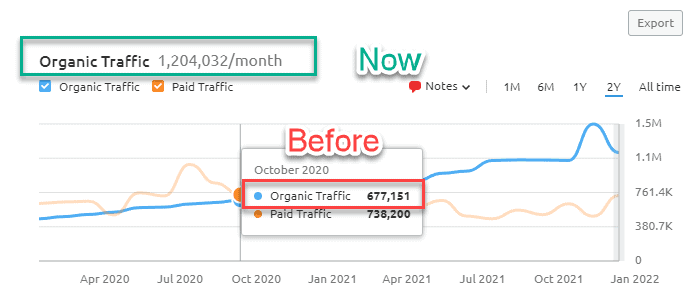
SaaS SEO mistake 2: Poor UGC management
Contently is a content marketing platform. It decided to remove thousands of user-generated pages from its site.
It did this by deindexing the subdomains used to host its members’ writing portfolios. Deindexing key pages is one of the biggest SaaS SEO mistakes you can make.
Why did it do this? Because it wanted to vet and approve all portfolios manually. And if they met certain criteria, Contently would relist them.
The reason for this process was likely due to abuse. Some users didn’t host legitimate writing samples. They exploited these pages to promote spammy content.
So, what happened after deindexing the user-generated portfolio pages? Contently saw a massive 97% drop in organic traffic.
This mistake highlights the risks of user-generated content (UGC). Contently’s purpose is to help professionals showcase their professional writing samples. However, some users exploited these free subdomains to rank for spammy, high-traffic keywords. This probably triggered Google’s spam filters. And this may have caused penalties or drops in rankings. That would explain why Contently wanted to remove those pages.
What Contently should have done:
- Implement stronger content moderation. Contently should have used automated and manual review systems earlier. This could have prevented spam from taking over. This would have allowed the company to flag suspicious content.
- Use selective deindexing. Contently should have identified and removed only the spammy pages. This shouldn’t have included legitimate writer portfolios. Doing so would have preserved valuable organic rankings. Contently could have also used nofollow and noindex tags for questionable content. This probably would have had a less significant impact on rankings.
uSERP’s approach with ActiveCampaign would have been a far more effective strategy.
We focused on building high-quality backlinks from niche-relevant websites. This helped the marketing automation platform secure #1 rankings for valuable, high-conversion keywords.
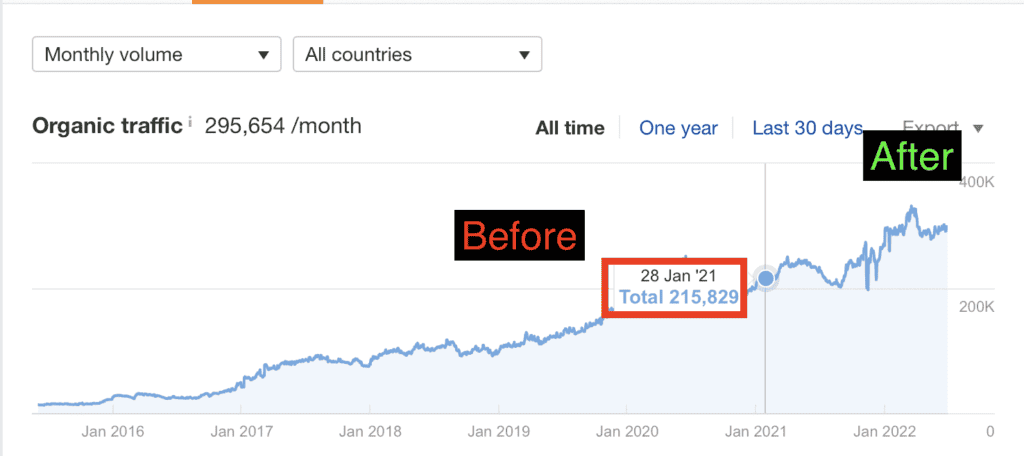
Contently could have used a similar strategy. This might have included optimizing and consolidating its existing content. For example, Contently could have addressed spammy pages without losing valuable user-generated portfolios. By following this strategy of optimization and consolidation, Contently could have maintained its loyal customers while improving its conversion rates.
SaaS SEO mistake 3: Programmatic SEO gone wrong
Datanyze is a company that provides contact data for sales prospecting. It used automation to create thousands of landing pages for people and companies.
These pages mainly featured basic contact details. Google started flagging these pages as low-quality and irrelevant. As a result, Datanyze organic traffic dropped by 95.46%.
Why did this happen? Because Google’s algorithms prioritize content that provides real value to users. Datanyze’s programmatic content consisted mostly of basic contact information. And these lists were repetitive. So, Datanyze failed to offer unique or valuable insights.
What Datanyze should have done:
- Focus on high-quality, user-driven content. Datanyze should have created content that offers industry-specific insights.
- Build strategic backlinks. Building high-quality backlinks would have helped Datanyze. How? By improving domain authority (DA) and providing signals of trustworthiness to Google. It’s possible Datanyze would have been a more reliable source of information in the eyes of Google. As a result, maybe Datanyze wouldn’t have seen such a drastic drop in traffic.
What else should Datanyze have done? To avoid major SaaS SEO mistakes, it should have enlisted the help of uSERP’s experienced team. We specialize in content optimization, link building, and digital PR.
This approach saw positive results with Propel, a PLM software company. For example, we were able to secure earned backlinks from authoritative sources like G2 and the Washington Post. This drastically improved Propel’s DA.
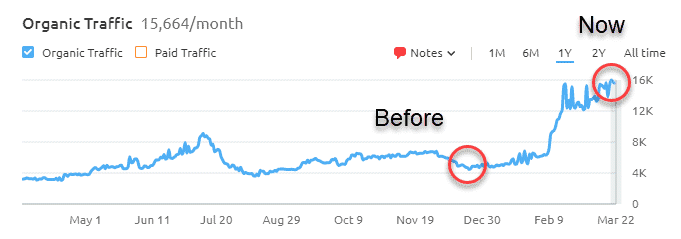
Gaining these types of backlinks would have signaled to Google that Datanyze’s content was trustworthy and valuable.
As a result, the company may have seen improved search rankings for key terms.
SaaS SEO mistake 4: AI content detection
SaaS spend management platform BetterCloud lost 94% of its estimated organic traffic. This happened after Google’s November Core Update. The update targeted low-quality content and AI-generated articles—popular SaaS SEO mistakes.
The company’s traffic loss mostly came from a subfolder (/academy) where it had posted generic, low-quality articles. One example is an article titled “How to Delete an Unwanted Page in Google Docs.” This page appeared to be AI-generated content because it lacked valuable depth and was overly simplistic.
What BetterCloud should have done:
- Avoid low-quality content. It was a mistake to create generic AI-generated articles. BetterCloud should have focused on creating high-quality, helpful, and expert-driven content. That way, it would directly address users’ needs.
- Focus on E-E-A-T. BetterCloud should have invested in establishing itself as an authority in the SaaS spend management space. This involves following the E-E-A-T (Experience, Expertise, Authoritativeness, Trustworthiness) framework. BetterCloud could have achieved this in several ways. For example, it could have incorporated insights from industry experts. It could have also showcased user testimonials or published detailed case studies. Creating thought leadership content is another viable option.
Increasing topical authority would have been an excellent strategy for BetterCloud. The company could have created educational, expert-backed blog posts. This would have naturally attracted backlinks from authoritative sources in the SaaS industry.
uSERP took a similar approach to OnBoard, a board management software platform. We enhanced existing blog posts to target highly relevant information keywords (short- and long-tail keywords). This helped boost topical authority.
We also built backlinks from high-authority sites to improve the authority of these blog posts. This helped OnBoard rank higher for competitive keywords.
The company gained 560 referring domains and 893 keywords in the top #3 results.

SaaS SEO mistake 5: Thin content penalties
Ricotta Trivia, a Slack add-on for icebreakers and team-building games, lost a great majority of organic traffic to its site: 91%.
This was likely because the site had thin content and a poor on-page experience, especially on its blog.
The blog content, while related to the business, lacked depth and value. So, it fell victim to Google’s algorithm updates targeting low-quality content. This site also had intrusive ads and pop-ups, which probably made the issue even worse.
What Ricotta Trivia should have done:
- Improve content quality. Ricotta Trivia should have created more in-depth and valuable content around its target keywords. Each blog post should have provided useful insights, tips, or actionable advice for users.
- Enhance user experience (UX): The company could have reduced or removed intrusive ads and pop-ups that disrupt the UX. A cleaner, more navigable site would have kept users engaged longer and improved SEO performance.
In the case of Remote, an HRIS platform, uSERP’s approach led to positive results. This showed how effective SEO optimization and a well-organized site structure could be. Remote was a boost to organic traffic and keyword rankings. The company achieved an impressive 314% year-over-year (YoY) organic traffic growth. We did this through domain improvements, targeted link building, and content optimization.
For example, we leveraged thought leadership content, including comprehensive guides. As a result, Remote established itself as an authoritative figure in the HR SaaS space.
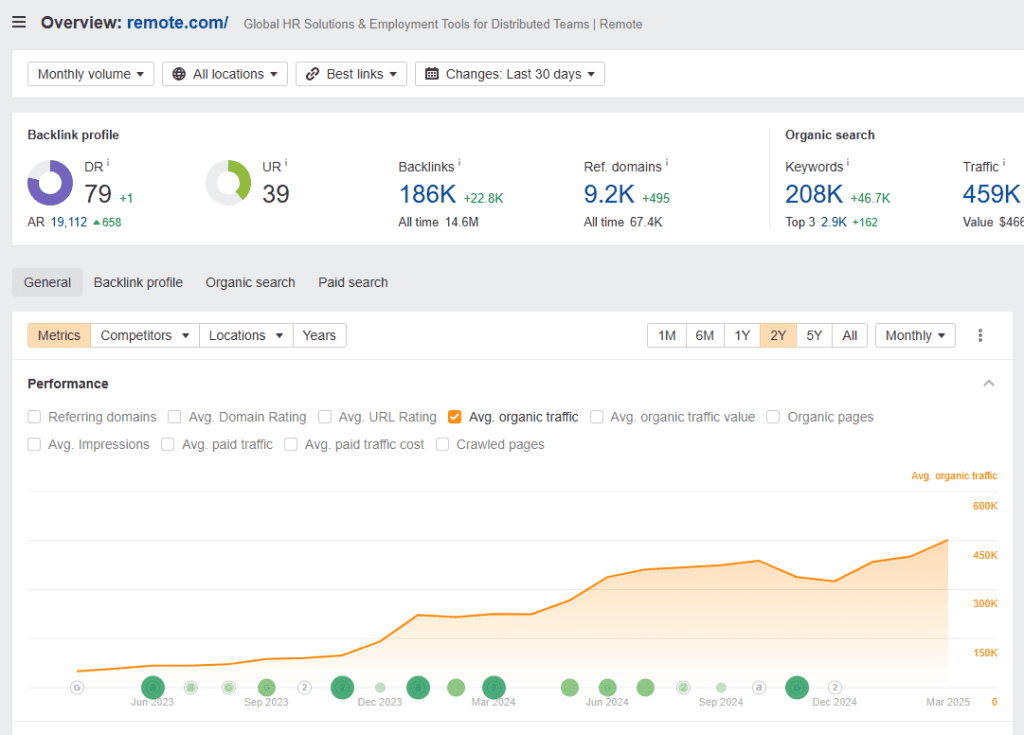
Ricotta Trivia could have done something similar to this. It could have focused on in-depth guides or practical tips for using its product effectively.
Also, like Remote, Ricotta Trivia should have worked on its overall site structure to make it more user-friendly. This involves improving navigation and reducing disruptive features like pop-ups.
The new SaaS SEO playbook for the post-AI era
Like SaaS, SEO moves and evolves rapidly.
We are past the point where you can throw a random SEO agency $10k/m and get results. You need an agency that has their hands deep in the pulse of both industries.
We know SaaS SEO like the back of our hand. Not only do we run our own SaaS companies, but we also invest in many of our partners. Our team has a proven track record of helping SaaS businesses reach and exceed their MRR goals at every stage of growth.
We don’t waste time on vanity metrics. Our approach to SEO is laser-focused on driving MRR and sales-qualified leads. While our services deliver the best results post-Series A, if you’re looking to turn your Series B into a unicorn IPO, just ask Monday.com why we’re the team to call.
Think of us as an extension of your marketing team, but with the kind of deep expertise you’d never be able to build in-house, covering everything from full-scale SEO strategy and technical SEO to content strategy, production, and digital PR. Our SaaS SEO agency delivers results 10x faster and more cost-effectively than anything else your funding can buy.
If that sounds like what you need, click here to chat with us.
Frequently Asked Questions about SaaS SEO mistakes
Here are some straightforward answers to the most common questions we receive about SaaS SEO mistakes
1. What are common SEO mistakes SaaS companies make?
Many SaaS focus too much on targeting popular keywords without thinking about what users really want. They often forget to create high-quality, useful content that answers their audience’s questions.
This is one of the most common mistakes, as we have seen throughout this post. Refer back to the different SaaS SEO mistakes like thin content or AI content generation for more on the impact of low-quality content. Other SEO mistakes to avoid include:
- Developing a clear content strategy that works for both search engines and potential customers
- Failing to organize the site properly for both visitors and search engines
- Ignoring things like page speed and mobile optimization
- Not paying attention to how easy the website is to use
- Not using backlinks
2. How can SaaS businesses effectively use AI in content creation without risking penalties?
SaaS businesses can use AI to help with manual tasks. This includes research, brainstorming, and organizing content. However, it should never replace the work of humans in writing the final content.
The content must still be high-quality, relevant, and original to avoid penalties. AI can help with things like finding the right keywords, but a human should always check and improve the output to make sure it adds value.
3. How can SaaS companies avoid penalties for automated content manipulation?
SaaS companies should avoid using automated tools that create keyword-heavy or low-quality content. Google can detect and penalize this.
Instead, they should focus on creating real, valuable content that helps their audience. The content should provide useful insights and match what users are looking for, not just try to game the system.
For more tips on how to balance automated content creation and human insight, see Mistake #1.
4. How can SaaS companies avoid Google penalties for thin content?
Thin content doesn’t give users much value. SaaS companies should aim to create content that provides helpful, well-researched information. Updating and improving older pages also helps prevent Google from flagging them as thin.
Want more tips on how to avoid creating low-quality content? See Mistake #5.
6. Why isn’t my SaaS website ranking for important keywords?
Your SaaS website may not be ranking because you might be targeting competitive keywords without a solid plan. Issues like poor site layout, slow loading times, or content that doesn’t match your users’ search intent can also hurt your rankings. Google needs to see your content as relevant and helpful to rank it high.
If you need help ranking for relevant keywords and optimizing content, schedule a consulting call with uSERP.
7. How does poor site structure affect SaaS SEO performance?
If your website’s structure is confusing, it can hurt both user experience and search engine rankings. It can lead to higher bounce rates (people leaving the site quickly) and missed opportunities to rank for important keywords.
A well-organized site helps both visitors and search engines find and understand your content. If your site’s structure is unclear, search engines may not rank it well.
8. Why am I not getting traffic to my SaaS landing pages?
Not getting traffic to your SaaS landing pages could be due to several factors. This includes poor keyword targeting, insufficient content optimization, or low-quality backlinks. Your landing pages might also lack compelling calls-to-action (CTAs). Or, they might fail to address the specific pain points of your target audience.
As a result, users may not interact with your content for long. This signals to Google that your pages aren’t providing enough value. Your landing pages might also lack link mentions from other sites. We go more in-depth about gaining backlinks under Mistake #3.
9. What SEO tactics should SaaS startups avoid in their early stages?
In the early stages, SaaS startups should avoid black hat SEO tactics. These include keyword stuffing, buying backlinks, or copying content. Using these strategies can lead to penalties from search engines.
Also, steer clear of targeting very competitive keywords right away. Instead, focus on creating useful content for your audience. Use specific keywords that match their needs.
10. How can I recover from a Google penalty for my SaaS site?
To recover from a Google penalty, first identify what caused it. Check messages in Google Search Console or look for traffic drops. Once you know what went wrong, fix the issues.
Common fixes include removing bad backlinks or improving content quality. After making changes, ask Google to reconsider your site. Keep your site updated and regularly check for SEO issues to avoid future penalties.
Need help? uSERP can help you conduct a site audit to find out where your site needs improvement. Plus, you’ll gain insights into your competitors’ strategies. Schedule a free consultation call to get started.
